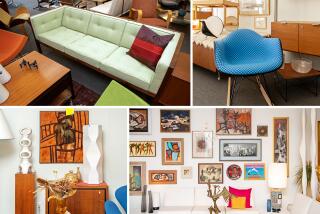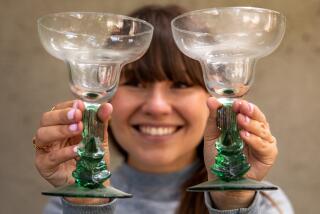Stalking Big Game in the Antique Jungle
Mumsey Nemiroff’s job is to help you get lucky. During her 40 years in the decorative arts business, the independent art consultant and historian has crisscrossed the globe hunting pedigreed pieces for a clientele that includes the state of California, Raffles L’Ermitage hotel and countless law firms. Nemiroff recently offered pointers in a lecture at the seventh annual Los Angeles Antiques Show in Santa Monica.
So what’s the key to making the big score?
First and foremost, take the time to learn your area. For example, if you’re buying pre-Columbian art on a street corner in Guatemala, spit on it. If it’s really old, your saliva should be absorbed, because it will be very porous. Train your fingers to feel cracks and [evidence of] restoration that aren’t detectable by the naked eye. Make friends in the collecting community. You never know who will let you in on an exclusive tip.
How does a novice gain expertise?
Start by haunting the finest antique stores and galleries. Even if you think you can’t afford anything, go in, ask questions and look around. Estate sales are good resources, too. You need to look at the best examples of what you want to collect. Once you become an expert, then you can go to the yard sales and flea markets.
What are some common mistakes made by collectors?
Collectors either buy too quickly or not fast enough. In London once I spotted an absolutely wonderful Ashanti stool. I left without it because I didn’t want to pack it. Then I began obsessing over it. When I went back, someone was carrying it right past me. But other times we talk ourselves into something. We want it so badly that we overlook obvious flaws.
How do you spot a fake?
I can’t stress this enough: do your research. Use reference books to make comparisons. There is no such thing as he or she has a “good eye.” You only have a good eye if you have an educated eye.
What’s your own best discovery?
One of my favorites is a 16th century clepsydra, which is an early water clock. You pour water into a receptacle and it drips down into another receptacle. As the water drips out, a weight is lowered and that moves the hands of the clock. My husband and I found it in the Paris flea market.
Why is the “Antiques Roadshow” such a phenomenon?
It’s all about profit. Everybody wants to win the lottery, and antiques are essentially a way to do that. It plays into the consumerism of today. But don’t get me wrong, I think the show’s great because it’s popularizing something that can become the most enriching thing in your life.
What’s the first thing to do after you’ve struck gold?
Assuming that you can afford it--our aesthetic usually leaps beyond our wallet--remember that we live in earthquake country. I’m a big believer that you never own an antique. You are only its temporary custodian. Fine-art insurance is extremely reasonable, and in case of damage, you’ll have the funds to find a reliable restorer.
More to Read
Sign up for The Wild
We’ll help you find the best places to hike, bike and run, as well as the perfect silent spots for meditation and yoga.
You may occasionally receive promotional content from the Los Angeles Times.






